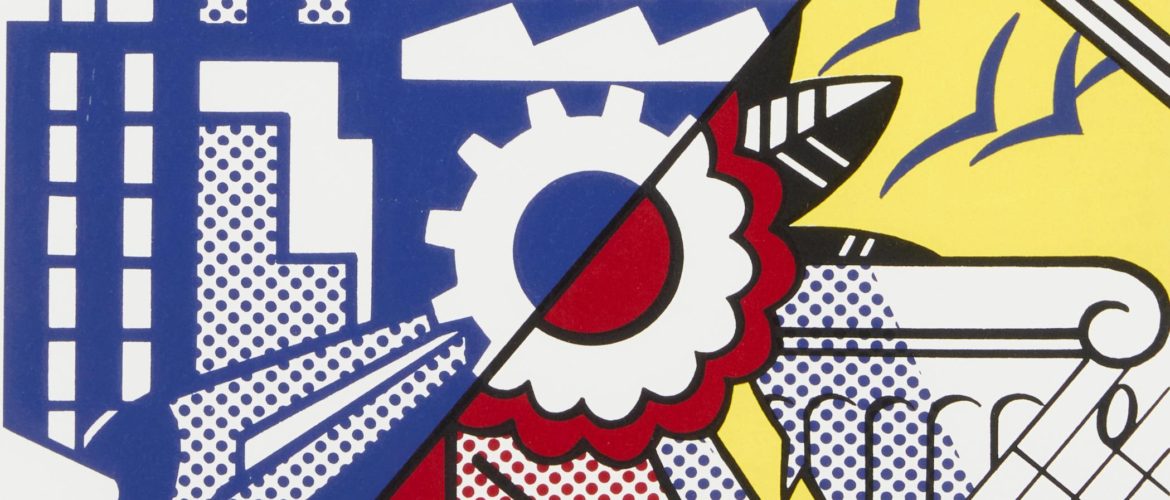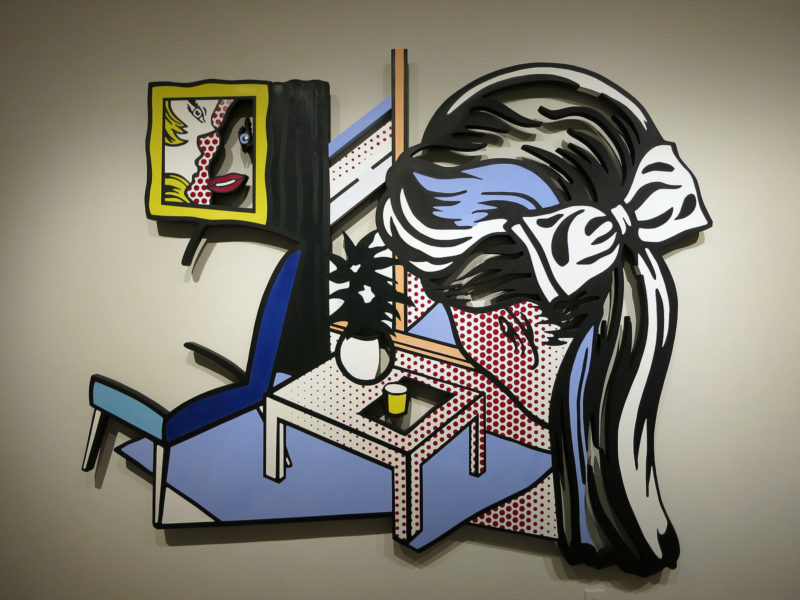Secret Psychology of Paintings by Roy Lichtenstein

Roy Lichtenstein was a famous American painter with a distinct visual style and philosophy. Many have argued that his art is deliberately impersonal, with flat and mechanical elements creating an effect of emotional distancing. Lichtenstein adopted the Ben-Day dot style of painting and extensively used speech bubbles to create comic strip-style art, so his work escapes a unanimous evaluation. Yet, experts recognize a deeper-level psychology and wit behind his paintings, which are disclosed below.
Biography and Style of Roy Lichtenstein
Lichtenstein was born in 1923 and grew up during the period of Abstract Expressionism’s dominance in the U.S. art scene. While the work of frontline artists, such as Jackson Pollock and Willem de Kooning, created deeply emotional impressions of creative expression, Lichtenstein’s art was starkly mechanical. The artist chose to adopt a comic book visual style, making his images look trivial and commercial. As a result, Lichtenstein’s works have long been associated with a glossy pop culture, though they also harbor a realm of thought-provoking themes and struggles.
Deliberately Impersonal Art by Lichtenstein
The choice of visual means by Roy Lichtenstein was intentional, with his creative language serving as a parody of mass media dramatization and commodification. For instance, his paintings Whaam! and Drowning Girl mocked the heroic gestures of popular abstract expressionist painters by depicting the absurdity of the drama. These and other Lichtenstein’s works offer a seemingly simple yet highly relevant dilemma of genuine feelings versus social cliches, which every person has felt at least once in their lives.
Themes of Isolation and Artificiality
One of the core underlying themes in Lichtenstein’s works is the absurdity of social situations and consumerist superficiality that translates into life routines. An illustrative example is his painting Oh, Jeff… I Love You, Too… But…, where a woman with big eyes and a frozen face embodies the drama of human captivation by consumer romance. Many associate this work with a false promise of the media, which substitutes genuine feelings with hollow, superficial products and traps people in those illusions.
Depth Behind the Dot Painting Technique
The dot painting technique that Lichtenstein used in his work also suggests an intentional choice of a machine printing-like method for human face and emotion depictions. It served as a tool for the artist’s humor, which he applied to show that he critiqued the system but also was its product and part. While dots should be ideal if printed by a machine, Roy Lichtenstein made them imperfect to illustrate the flaws of human nature and delineate the boundaries of authenticity and industrial automation.

